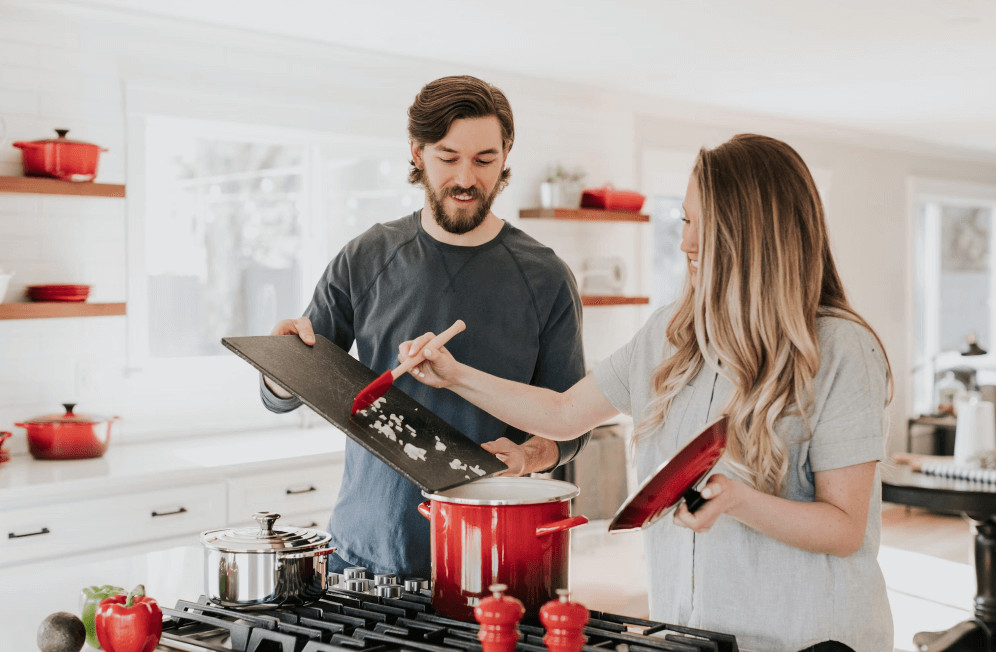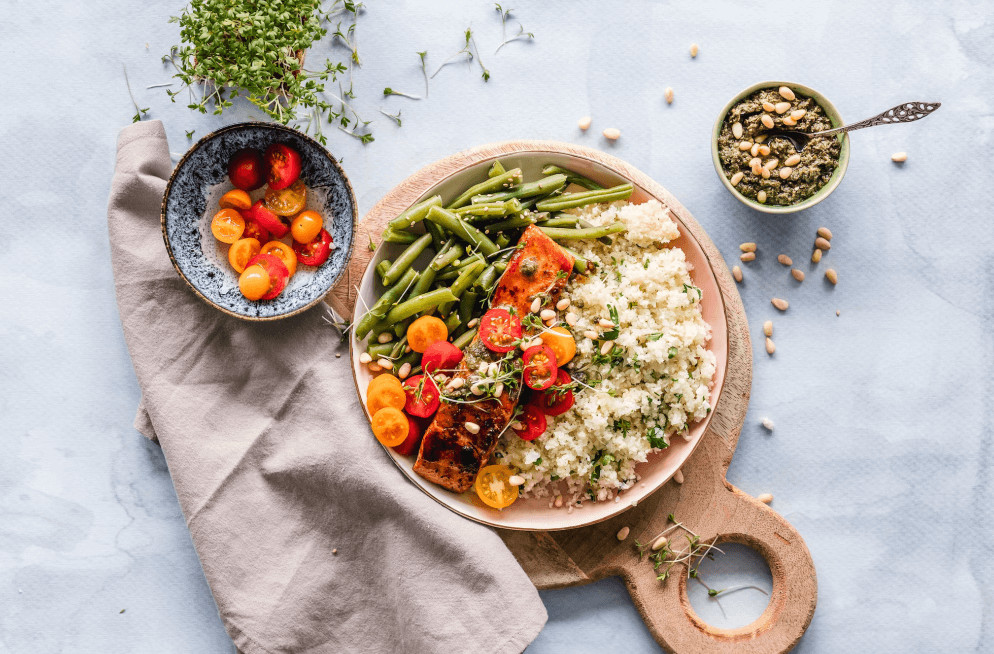How To Start A Food Hobby From Zero To Hero

Are you interested in starting a food hobby but need help knowing where to begin? Look no further! This blog will go through six simple steps to help you get started on your foodie journey.
With a solid foundation in the basics, you’ll be able to tackle more complex recipes confidently. So if you’re ready to dive into the world of food, these six simple steps will help get you started on your journey. Happy cooking!
Step 1. Learn the basics of cooking and baking
Hey there! Welcome to the first step of your food hobby journey – learning the basics of cooking and baking.
You might think, “But I don’t know how to cook or bake anything!” Don’t worry; that’s totally okay. Everyone has to start somewhere, and the great thing about learning the basics is that it’s a lot of fun.
So, where do you start? First, it’s important to understand the different cooking techniques out there. For example, do you know the contrast between boiling and simmering? Or what it means to sauté something? Understanding these techniques will give you a solid foundation for cooking and help you feel more confident in the kitchen.
Next, you’ll want to learn about the different ingredients you’ll be working with, and this includes everything from understanding how to properly store and handle different types of food to learning about their flavour profiles and how they work together in recipes.
Finally, becoming familiar with the equipment you’ll be using is a good idea, such as the different types of pots, pans, and utensils, as well as appliances like ovens and stovetops. The more comfortable you are with your kitchen tools, the easier it will be for you to tackle new recipes.
So don’t be afraid to start small and work your way up. Practice is key. And remember, it’s all about having fun and enjoying the process!
Cooking techniques
There are many different cooking techniques used in the kitchen, including:
- Baking: This technique involves cooking food in an oven using dry heat. Baking is often used for cakes, bread, and other pastries, as well as for roasting meats and vegetables.
- Boiling: Boiling is cooking food in boiling water or other liquid, such as broth or soup. This technique is often used for cooking pasta, rice, and vegetables.
- Braising: Braising is basically cooking food slowly in a minute amount of liquid, such as water, broth, or wine, in a covered pan. This technique is often used for tougher cuts of meat to tenderise them.
- Grilling: Grilling is cooking food over direct heat on a grill or over a fire. This technique is often used for meats, seafood, and vegetables.
- Roasting: Roasting involves the process of cooking food in an oven using dry heat. This technique is often used for meats and vegetables and is similar to baking.
- Sautéing: Sautéing involves cooking food quickly in a minute amount of oil or butter in a frying pan, from medium to high heat. This technique is often used for meats, seafood, and vegetables.
- Simmering: Simmering is cooking food in liquid over low heat. This technique is often used for cooking soups, stews, and other dishes that require a longer cooking time.
- Steaming: Steaming involves cooking food in a steamer or on a rack over boiling water in a covered pot. This technique is often used for vegetables, seafood, and rice.
Step 2. Experiment with different recipes and ingredients
Now that you’ve learned the basics of cooking and baking, it’s time to start experimenting with different recipes and ingredients. Experimenting is a great way to find out what you enjoy cooking and eating the most.
Here are a few tips for experimenting with different recipes and ingredients:
- Start with recipes that are within your skill level: Don’t bite off more than you can chew (literally!) by trying to make something way above your skill level. Look for recipes matching your current skill level and work your way up.
- Feel free to make substitutions: If you don’t have a specific ingredient or don’t like a particular flavour, feel free to make substitutions. Substituting is a great way to get creative and put your spin on recipes.
- Try out different cuisines and cultural cooking traditions: Experimenting with different cuisines and cultural cooking traditions is a great technique to expand your culinary horizons and try new flavours and techniques.
- Keep a food journal: As you try out new recipes and ingredients, keep a journal to document your experiments and any insights or observations. A food journal can be a helpful reference as you continue to develop your food hobby.
By experimenting with different recipes and ingredients, you’ll have the opportunity to discover new flavours and techniques and find out what you enjoy cooking and eating the most.

Step 3. Get creative in the kitchen
It’s time to get creative in your kitchen. Don’t be scared to experiment and try out new techniques and flavours. Creativity is a great way to find your culinary niche and develop your skills.
Here are a few ideas for getting creative in the kitchen:
- Try a new cooking method: Roasting, grilling, sautéing, boiling etc. There are so many ways to cook food! Try out a new cooking method to see what you like best.
- Experiment with new ingredients: Be bold and try new ingredients and flavours. You never know what delicious combinations you might discover.
- Make something from scratch: Instead of using pre-made ingredients, try making something from scratch, such as bread or pasta.
- Put your spin on a recipe: Take a classic recipe and give it your twist by adding your favourite ingredients or changing the cooking method.
By getting creative in the kitchen, you’ll have the opportunity to try out new flavours and techniques and find what you enjoy cooking and eating the most. Don’t be scared to take risks and make mistakes – that’s all part of the fun of having a food hobby!
Step 4. Learn about different cuisines and cultural cooking traditions
One of the most interesting things about any food hobby is learning about different cuisines and cultural cooking traditions. Not only does this add variety to your cooking repertoire, but it can also be a great source of inspiration for new recipes and flavour combinations.
To get started, try exploring different cuisines and cultural cooking traditions worldwide. This exploration could be as simple as trying out new recipes from other regions or learning about the ingredients and techniques used in traditional dishes.
Another great way to learn about different cuisines and cultural cooking traditions is to seek resources such as cookbooks, food blogs, and cooking classes. These can be excellent sources of information and inspiration for new recipes and techniques.
Feel free to try out new ingredients and techniques that may be unfamiliar to you. So go ahead and embrace the diversity of the culinary world! The more you learn about different cuisines and cultural cooking traditions, the more you’ll expand your cooking repertoire and find new sources of inspiration in the kitchen.
Step 5. Join food-related communities for inspiration and support
Join food-related communities, whether that’s online or in person. These communities are a great source of inspiration, advice, and support for fellow foodies.
Online communities, such as food forums or social media groups, are a great to connect with others who share your love of food. You can ask questions, share recipes and tips, and get feedback on your creations.
In-person communities, such as cooking clubs or potlucks, are also great for connecting with others and learning from each other. Plus, these communities can benefit those who prefer a more hands-on learning experience. In addition to being a source of creativity and support, food-related communities are also a great way to make new friends and build connections with others who share your passion for food.
Step 6. Share your food hobby creations through food photography
Sharing your food creations with others is a great way to celebrate your hobby and get feedback on your dishes. One way to do this is through food photography. Food photography involves taking pictures of your dishes and sharing them on social media or other channels.
Food photography is a creative and fun way to showcase your culinary skills and share your food hobby with others. It can also improve your skills in the kitchen, as you may be more inclined to pay attention to the presentation of your dishes if you know you’ll be taking pictures of them.
To get started with food photography, you’ll need a camera or smartphone with a good camera and some basic photography skills. You’ll also want to consider the lighting and composition of your shots and any props or accessories you might use to enhance the visual appeal of your dishes. By sharing your food creations through food photography, you can connect with other food enthusiasts and get inspiration for new recipes and techniques. It’s a great way to turn your love of food into a fulfilling and enjoyable hobby.
Conclusion
A food hobby can be a fun and rewarding way to explore your love of cooking, baking, and trying new recipes. To transform your love of food into a fulfilling hobby, you can:
- Learn the basics of cooking and baking: Start by learning the fundamentals of cooking and baking, such as knife skills, kitchen safety, and basic techniques like sautéing, boiling, and roasting.
- Experiment with different recipes and ingredients: Once you have the basics down, try out different recipes and ingredients to see what you enjoy cooking and eating.
- Get creative in the kitchen: Be bold, experiment, and try new techniques and flavours. Creativity is a great way to find your culinary niche and develop your skills.
- Learn about different cuisines and cultural cooking traditions: Try cooking dishes from diverse cultures to expand your knowledge and palate.
- Join food-related communities for inspiration and support: Look for online communities or local groups where you can connect with other food enthusiasts and share your creations.
- Share your creations through food photography: Take pictures of your dishes and share them with others to get feedback and inspiration for new recipes.
By following these steps, you can turn your love of food into a satisfying hobby that brings you joy and allows you to share your culinary skills with others. Thank you for coming this far. You may also like our blog on How To Throw A Legendary House Party | Free E-book
